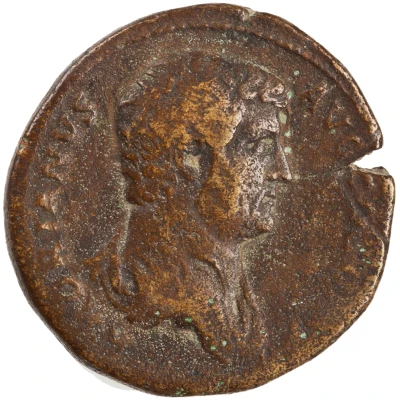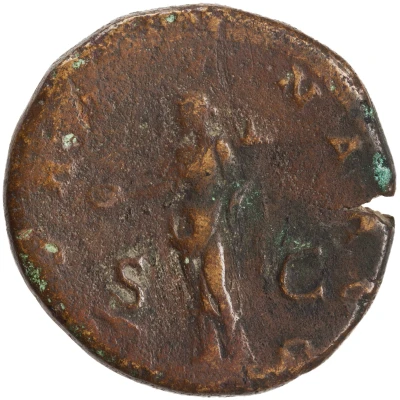Sestertius - Hadrian FORTVNA AVG S C; Fortuna
| Orichalcum | 25 g | 32.5 mm |
| Issuer | Rome › Roman Empire (27 BC - 395 AD) |
|---|---|
| Emperor | Hadrian (Publius Aelius Hadrianus) (117-138) |
| Type | Standard circulation coin |
| Years | 133-135 |
| Value | 1 Sestertius = ¼ Denarius |
| Currency | Denarius, Reform of Augustus (27 BC – AD 215) |
| Composition | Orichalcum |
| Weight | 25 g |
| Diameter | 32.5 mm |
| Shape | Round (irregular) |
| Technique | Hammered |
| Demonetized | Yes |
| Updated | 2024-10-06 |
| Numista | N#256593 |
|---|---|
| Rarity index | 100% |
Reverse
Fortuna standing left, holding patera and cornucopia.
Script: Latin
Lettering:
FORTVNA AVG
S C
Translation:
Fortuna Augusti. Senatus Consultum.
Good fortune of the emperor. Decree of the senate.
Comment
Source: Online Coins of the Roman Empire (OCRE)Interesting fact
The Sestertius coin , which features the Roman emperor Hadrian and the goddess Fortuna, is notable for its unique material composition. The coin is made of Orichalcum, a metal alloy that was highly valued in ancient Rome for its durability and resistance to corrosion. Orichalcum was often used in the production of coins during the Roman Empire, but it's interesting to note that the exact composition of this alloy is still a subject of debate among historians and numismatists today. Some believe that Orichalcum may have been a combination of copper, zinc, and other metals, while others argue that it may have included trace amounts of precious metals like gold and silver. Regardless of its exact composition, the use of Orichalcum in the production of coins like the Sestertius coin speaks to the advanced metallurgical techniques and technologies employed by the ancient Romans.

